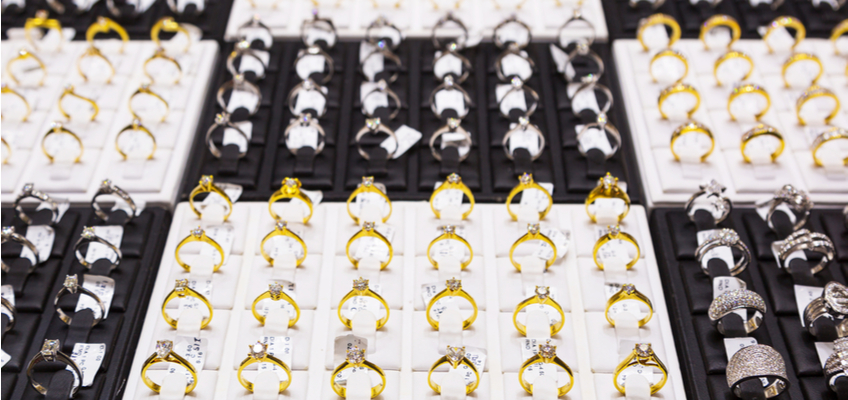
The 5 Most Important Steps to Becoming a Successful Jewelry Affiliate
One of the first things an affiliate marketer must decide is whether to offer general merchandise and services or to specialize in a particular category of products. For some people that have a passion or expertise for jewelry, a specialization in jewelry affiliation makes a lot of sense.
While specializing creates some potential advantages in your ability to target certain buyers, there are steps you must take to become successful. Let’s dive in.
Find the right niche
Even within the jewelry business, you must decide whether to function as a general jewelry affiliate or specialize in one or more product categories. By generalizing, your marketplace is bigger and you have access to more types of products and providers for promotion. However, by specializing in a category like rings, necklaces or earrings, you fine-tune your ability to target specific types of buyers even more.
Your passion and talents are key factors to consider in determining your approach. If you opt to sell in multiple categories, just know that you need a broader base of interest and knowledge to create landing pages and marketing content that appeals to your audience. If you have a more narrow interest, you can hone that with more in-depth content and a more personalized approach to the products and market.
Create a killer marketing plan
Two of the first key steps to jewelry affiliate marketing are the development of a website and blog, and market research. Initially, you want to create a website that depicts your individual brand and offers the eCommerce functionality that you need. For your blog, consider article topics that allow you to offer tips, news and expert insights to people interested in the products you choose to market. A self-hosted WordPress site and blog is often the simplest way to begin.
In researching the marketplace, you want to build a persona of the typical buyers that purchase the products you plan to sell. You can gain some insights on this by reviewing customer profiles on affiliate websites by merchants. Each merchant normally offers insights on demographics and lifestyle factors to support affiliates. Researching keywords is another important marketing step. You need to find out which types of keywords your targeted customers commonly search for when researching products.
The Google Keyword Planner tool is one of the simplest places to start. It allows you to estimate the number of searches for a given phrase, and providers similar data for closely-related phrases. This data helps you prepare content to target high-opportunity topics and keywords.
As you select keywords to target, focus on long-tail searches rather than shorter phrases that include brand or product names. These shorter searches are usually dominated by chain stores or larger brands, and your efforts are likely to go unrewarded. For instance, imagine the competition you face by trying to target searches for “Rolex watches” or “engagement rings.” The practical reality is a small e-commerce site cannot compete with larger brands in competitive industries. Instead, you might create a page or blog targeting “Rolex watches for Father’s Day” or “eccentric silver engagement rings.” This approach allows you to create numerous landing pages targeting diverse long-tail searches, potentially expanding your audience.
Research and select affiliate programs
Determine which affiliate programs you want to join. Again, you must decide whether to concentrate on a few popular jewelry brands or to offer products from a diverse mix of programs. Most third-party affiliate programs, including ClickBank and ShareaSale feature a decent number of jewelry merchants. Research several programs to see which offer jewelry programs you’d like to work with.
Some large jewelry chains offer their own affiliate programs directly on site, including Kay and Blue Nile. Commissions on sales from brand-name merchants like these are normally around 5 to 7 percent. While it takes longer to sign up for programs on a one-by-one basis, the long-term rewards of marketing reputable brands may pay off.
Create landing pages and communication programs
Now that you have your operation in place, your audience in mind and your merchant partnerships established, it is time to set up shop. Create high-quality landing pages that build up the features and benefits of each product with language that caters to the most precise buyer persona possible. Offer examples of reasons why someone would make the purchase or wear the piece, and include quality images.
Implement marketing campaigns, leveraging search advertising, social media and other digital strategies. Have a CRM system in place that allows you to capture data on customers when they register to purchase, so that you can build your clientele and send follow-up emails to promote special events or new products.
Earn trust and loyalty
The more niche your marketplace, the more important it is that you work hard to earn trust with every visitor that comes to your site and every customer that makes a purchase. The lifeblood of a jewelry affiliate is a loyal customer that makes repeat purchases and refers friends and family.
Offering clear and upfront communication is an important first step to earning trust. Follow through on all commitments that you make on behalf of merchants that you represent. Avoid or get out of programs with providers that do not demonstrate a commitment to a quality customer experience. Use follow-up communication to inform a customer about the next steps after an order, and to create a connection through an email contact list or newsletter. This connection sets the stage for ongoing communication.
Conclusions
There are challenges that face affiliate marketers in the jewelry business. However, success is possible if you take the right steps to find your product nice, develop an excellent marketing plan, formulate optimum merchant partnerships and build out a quality website.




